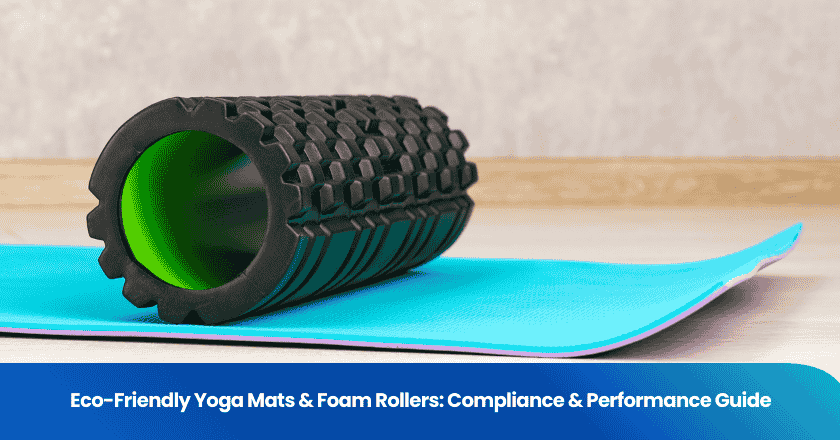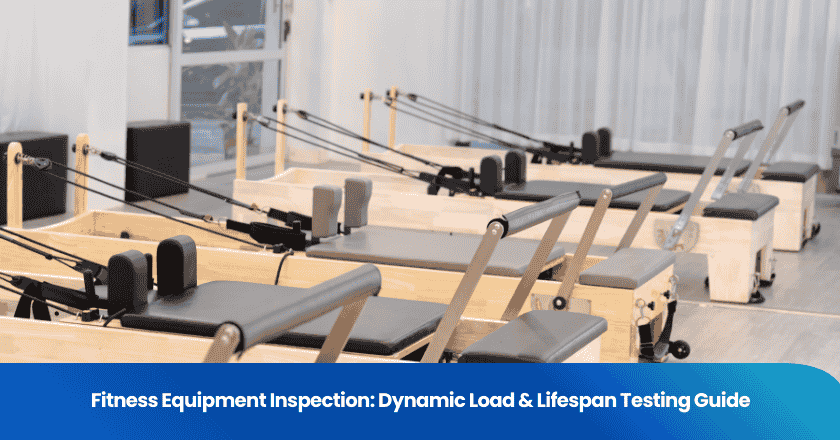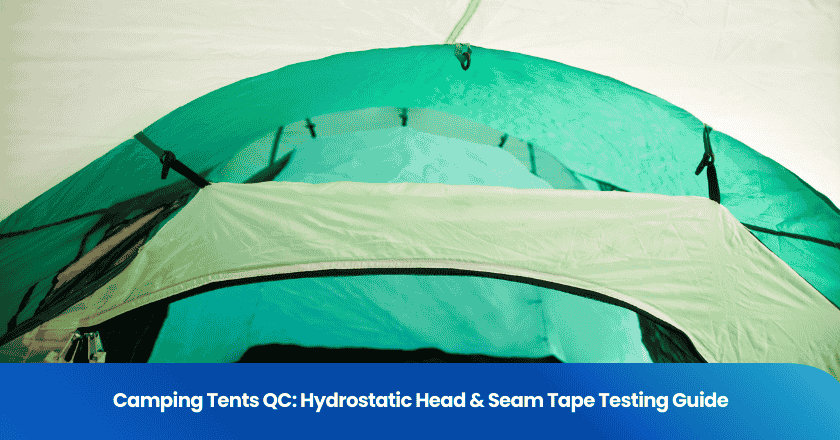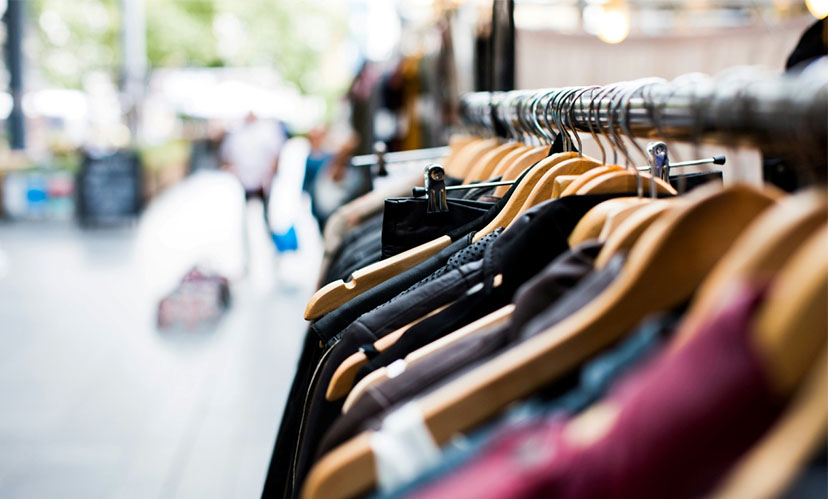
Overview of wholesale activewear suppliers market
The current global activewear market presents the following characteristics:
The market scale continues to expand
According to relevant reports, the global market size of wholesale activewear suppliers has been growing in recent years. This trend indicates that with the increase of health awareness and the popularization of sports culture, the demand for wholesale activewear suppliers will continue to grow.
Brands are fiercely competing
The global activewear market is characterized by numerous brands and fierce competition. There are internationally renowned brands such as Nike and Adidas, as well as many emerging and niche brands, which gradually occupy market share through unique design concepts and marketing strategies. The competition among brands is reflected in product innovation, marketing strategies, supply chain management, and other aspects.
Consumer demand is diversified
Modern consumers' demand for activewear is no longer limited to basic functionality, but also focuses on fashion, personalization, and the transmission of brand culture. Factors such as style design, material selection, and wearing comfort are increasingly becoming important considerations in consumer decision-making.
Intelligence and technological innovation
Intelligence and technological innovation have become important driving forces in the current activewear market. The application of innovative technologies such as smart wearable devices and high-tech fabrics not only enhances the functionality and comfort of activewear, but also promotes the transformation and upgrading of the entire industry.
Faced with such a huge market demand, choosing the right wholesale activewear suppliers has become a task that is both an opportunity and a challenge.
Potential challenges of choosing wholesale suppliers
In the process of selecting wholesale activewear suppliers, companies may face the following potential challenges:
There are many suppliers, making the choice difficult
There are a large number of wholesale activewear suppliers in the market, and companies need to select partners that meet their own needs from many choices.
The quality of products is uneven
With numerous suppliers and varying levels of quality, companies may face the risk of unstable product quality. When selecting suppliers, strict quality control is required.
Price competition is fierce among wholesale activewear suppliers
In order to compete for market share, suppliers often engage in price wars. Companies need to balance the relationship between price and quality to avoid falling into a vicious cycle of low prices and low quality.
Unstable supply chain
Wholesale activewear suppliers involve complex supply chain links, including raw material procurement, production processing, and logistics distribution. Any problem in any link may lead to supply chain interruptions or delayed delivery issues. Enterprises need to choose suppliers with a stable supply chain management system.
Choosing wholesale activewear suppliers is an important way for enterprises to meet market demand and enhance competitiveness.
In the selection process, enterprises need to fully consider factors such as market demand, product quality, price competition, and supply chain stability to meet potential challenges.
Step 1: Pay attention to the details of business needs
When choosing high-quality wholesale activewear suppliers, it is necessary to have a deep understanding and clear business needs to ensure the smooth progress of subsequent cooperation.
Here are several key details that need to be focused on:
1. Target Market Positioning:
Identify the target consumer group: Determine whether your activewear is targeted at professional athletes, fitness enthusiasts, student groups, or daily wearers.
Analyzing market demand: Understanding the specific needs of the target market, including preferences for styles, colors, sizes, and functional requirements.
Competitive analysis: Study the product lines, pricing strategies, and market performance of competitors to find differentiated competitive advantages.
How to identify the target market?
Identifying the target market is a comprehensive process, involving market research, data analysis, and other aspects. Here is some guiding information:
Collect information on the target consumer group through methods such as questionnaire surveys, interviews, and social media analysis
Use the collected data to analyze the characteristics of the target market, such as age, gender, income level, and consumption habits.
You can learn from the experiences of successful cases in the industry and understand how they positioned their target market and achieved success.
It should be noted that the specific situation of each enterprise is different, so it is necessary to adjust according to its own actual situation when referring to cases.
Although it is impossible to directly provide a specific case, one can refer to how some well-known activewear brands such as Nike and Adidas launch targeted product lines according to different consumer groups, and occupy market share through effective marketing strategies.
These brands usually conduct in-depth analysis of the target market to understand the specific needs of consumers and design products and marketing strategies accordingly.
2. Product requirements are clear:
Functional requirements: Based on the needs of the target market, specify which functions the activewear should have, such as breathability, quick-drying, warmth, etc.
Design style: Determine the design style of the product, whether it is to pursue fashion trends or focus on practicality and comfort.
Quality standards: Set the quality standards for products, including fabric material, workmanship precision, durability, etc.
How to determine product requirements?
Determining product requirements also needs to be based on the results of market research and data analysis, and can refer to industry standards and consumer feedback. Here are some specific steps:
Industry standards: Understand the relevant standards of the wholesale activewear suppliers industry to ensure that products meet basic quality and safety requirements.
Consumer feedback: Collect and analyze consumers' feedback on existing products to understand their needs and dissatisfaction points.
Sample testing: After initially determining the product requirements, potential suppliers can be asked to provide samples for testing to verify whether the product meets the expected standards.
Specification compliance:
When determining product requirements, one can follow the relevant standards and norms issued by the country or industry, such as textile safety technical specifications, clothing size standards, etc. These norms and standards help ensure the quality and safety of the products, and contribute to enhancing the reputation and brand image of the enterprise.
The first step in choosing high-quality wholesale activewear suppliers is to deeply understand and clarify one's own business needs, including defining the target market positioning and product requirements. This will provide strong support for subsequent supplier selection and cooperation negotiations.
Step 2: Research and understand wholesale activewear suppliers
In the process of selecting high-quality wholesale activewear suppliers, researching and fully understanding potential service providers helps to filter out partners that meet business needs, laying a solid foundation for subsequent cooperation.
The following are methods to obtain information on high-quality wholesale activewear suppliers from both online and offline dimensions:
Ways to obtain information online
1. Industry websites and B2B platforms
Utilizing B2B e-commerce platforms such as Alibaba, Global Resources Network, and 1688, these platforms gather a large number of wholesale activewear suppliers, providing a wealth of product information and supplier profiles. Through the filtering functions on the platform, precise searches can be conducted based on product categories, price ranges, supplier locations, and other criteria, quickly locating suitable suppliers.
2. Official website and social media
Visit the official websites of potential suppliers to learn about their development history, product lines, production capabilities, quality control systems, and other detailed information. Follow the suppliers' activities on social media to obtain the latest product launches, promotional activities, customer reviews, and other information.
3. Industry forums and communities
Join industry forums and communities related to wholesale activewear suppliers, exchange experiences with peers, and learn about word-of-mouth recommendations and potential risks within the industry. Through discussions in forums and communities, you can obtain some non-public supplier information and market intelligence.
4. Third-party evaluation platforms
Check user reviews and ratings on third-party evaluation platforms (such as consumer reports, price comparison websites, etc.) to understand the service quality and product reputation of wholesale activewear suppliers.
Ways to obtain information offline
1. On-site inspection
Arrange on-site visits to potential suppliers, personally visit their production bases, warehouses, and office spaces to understand their actual operational status and production capacity. Through on-site visits, you can more intuitively assess the professional level and credibility of the suppliers.
2. Industry exhibitions and trade fairs
Participate in industry exhibitions and fairs related to activewear, such as the China Sportswear Expo, the International Textile Fabrics and Accessories Expo, etc. These exhibitions gather numerous suppliers and buyers, providing an excellent opportunity to understand industry trends and find partners. At the exhibitions, you can directly communicate with supplier representatives to learn about their product features and cooperation policies, and collect promotional materials for subsequent research.
3. Industry Associations and Chambers of Commerce
Contact the local activewear industry association or chamber of commerce to inquire whether they have a list of recommended high-quality suppliers or contact information. Industry associations and chambers of commerce usually have rich industry resources and information channels, which can provide valuable assistance to buyers.
4. Recommendations from existing customers and partners
Seek recommendations from existing customers or partners to learn about the high-quality wholesale activewear suppliers they have worked with. Obtaining supplier information through word-of-mouth recommendations is often more reliable and effective.
Whether it is online or offline, there are many ways to help buyers obtain information on high-quality wholesale activewear suppliers. In practice, it is recommended to combine multiple approaches for comprehensive evaluation to ensure that the selected suppliers can meet business needs and have the potential for long-term cooperation.
Step 3: How to evaluate the service providers? How to agree on the terms of the contract?
In the process of selecting high-quality wholesale activewear suppliers, assessing the capabilities of alternative service providers, product quality, pricing, and contract terms are all crucial steps.
Assess the capabilities of alternative suppliers
1. Company background and qualifications
Company History and Scale: Examine the establishment time, development history, and staff size of the service providers to understand their market position and stability.
Qualification certificate: Confirm whether the service provider has relevant industry qualifications and certifications (such as ISO quality management system certification) to assess its professionalism and compliance.
2. Production and supply chain capabilities
Production capacity: understand the service providers' production lines, equipment, technical strength, etc., and assess whether they can meet the production needs of large quantities and high quality.
Supply chain stability: Examine the raw material sources, inventory management, logistics and distribution, and other aspects of the service providers to ensure the reliability and efficiency of the supply chain.
3. Service and Support
After-sales service: Understand the after-sales service system, return and exchange policies, technical support, etc. of the service providers, and evaluate their problem-solving capabilities and service levels.
Customer evaluation: By referring to the evaluations and feedback of his customers, understand the market reputation and service quality of the service providers.
Assess the quality of products provided by wholesale activewear suppliers
1. Sample testing
Request service providers to provide product samples and conduct comprehensive quality testing, including appearance, performance, durability and other indicators.
You can entrust a third-party testing agency to conduct tests to ensure the objectivity and accuracy of the test results.
2. Production process and quality control
Conduct an on-site inspection of the service providers' production sites, understand their production processes, quality control measures, etc., and evaluate the standardization and rigor of their production processes.
Check the written materials such as quality management system documents and inspection reports of the service providers to understand their quality management level and continuous improvement mechanism.
3. Product certification and standards
Confirm whether the product has passed the quality certification of relevant national institutions, and whether it meets industry standards or international standards.
Pricing and Cost-Performance Analysis
1.Cost composition analysis
Understand the raw material costs, production costs, transportation costs, etc. of the product, and evaluate whether the quotation of the service providers is reasonable.
You can request the service providers to provide a detailed cost structure explanation for a more accurate cost analysis.
2. Market competition comparison
Compare the prices and quality of similar products on the market, and evaluate the cost-effectiveness of the service providers' products.
Considering factors such as brand premium and service quality, comprehensively evaluate the overall value of the products provided by the service providers.
3. Negotiation and Bargaining
Engage in thorough communication and negotiation with service providers to secure more favorable prices and terms.
Negotiate reasonable discounts and preferential policies with wholesale activewear suppliers based on factors such as purchase volume and long-term cooperation intentions.
Key Terms and Concerns of the Contract
1. Product specifications and quality requirements
Clearly specify the specific specifications, models, materials, and other requirements of the product, as well as the quality standards and acceptance methods.
2. Pricing and Payment Methods
Determine the unit price, total price, and payment methods (such as the proportion of advance payment, payment conditions for the balance, etc.) for wholesale activewear suppliers.
Be aware of the risk of price fluctuations and you can agree on a price adjustment mechanism or fixed price terms.
3. Delivery time and location
Clearly specify the specific time, place, and mode of transportation for delivery to ensure the stability and efficiency of the supply chain.
4. After-sales Service and Guarantee
Detailed agreements on the content, duration, and safeguards of after-sales service to ensure that problems can be resolved in a timely manner.
5. Liability for Breach of Contract and Dispute Resolution
Clearly define the liability for breach of contract and compensation standards for both parties, as well as the methods and channels for dispute resolution (such as arbitration, litigation, etc.).
6. Confidentiality clause
If commercial secrets or sensitive information is involved, confidentiality clauses should be stipulated in the contract to protect the legitimate rights and interests of both parties.
Choosing high-quality wholesale activewear suppliers requires a comprehensive assessment of the service provider's capabilities, product quality, pricing, and contract terms. Through meticulous inspection and negotiation, one can ensure the selection of the most suitable partner for their own needs.
Common concepts and core links
In the process of selecting wholesale activewear suppliers, we need to pay attention to multiple concepts that may be discussed, as well as some key negotiation skills and delivery, quality inspection links.
Concepts to be aware of
1.Minimum order quantity (MOQ)
Definition: MOQ stands for Minimum Order Quantity, which refers to the minimum quantity of orders that suppliers are willing to accept.
The importance of MOQ for suppliers is to ensure production efficiency and profitability, avoiding resource waste. For buyers, understanding MOQ helps in planning purchase budgets and inventory management. A high MOQ may lead to inventory surplus for buyers, increasing financial pressure; a low MOQ may affect suppliers' willingness to cooperate or increase production costs.
2. Delivery cycle
Definition: Lead time refers to the time required from placing an order to delivering the goods.
The importance lies in the fact that the delivery cycle directly affects the purchaser's inventory management and market response speed. An excessively long delivery cycle may lead to the loss of market opportunities or inventory shortages, affecting sales; an excessively short delivery cycle may increase logistics costs or compromise production quality.
3. Quality inspection
Definition: Quality inspection refers to the process of evaluating the quality of activewear provided by wholesale activewear suppliers.
The importance of ensuring that purchased activewear meets quality standards is to maintain brand image and consumer rights. Inadequate quality inspection may lead to defective products entering the market, damaging brand image and consumer trust.
4. Product consistency
Definition: Product consistency refers to the uniformity in color, style, quality, and other aspects of activewear from the same batch or different batches, provided by wholesale activewear suppliers.
The importance of maintaining product consistency is crucial in preserving brand image and market reputation. Inconsistency in products can lead to consumer complaints and returns, negatively impacting sales performance and brand image.
MOQ negotiation skills with wholesale activewear suppliers
1. Understanding the market situation: Before negotiations, understand the MOQ settings of other suppliers in the same industry to gain a favorable position during negotiations.
2. Demonstrate purchasing potential: Show suppliers the intention for long-term cooperation and purchasing potential, striving to reduce the MOQ threshold.
3. Flexible adjustment of orders: Without affecting the overall procurement plan, consider placing orders in batches or adjusting the order mix to meet the MOQ requirements of the suppliers.
4. Establish trust relationships: Establish a good trust relationship with wholesale suppliers, and gradually reduce the MOQ restrictions through multiple collaborations and communications.
Delivery cycle estimation and confirmation with wholesale activewear suppliers
1. Estimated delivery cycle: Based on the production capacity, inventory situation, and logistics arrangements of the suppliers, estimate a reasonable delivery cycle.
2. Sign a contract to clarify: specify the delivery cycle and delivery location and other terms in the contract to ensure the rights and interests of both parties.
3. Track order progress: Communicate regularly with suppliers about the progress of orders to ensure production is on schedule.
4. Delivery confirmation: After receiving the goods, promptly conduct acceptance inspection and confirm the completion of delivery.
Quality inspection and product consistency maintenance
1. Quality inspection
Develop detailed quality inspection standards, including aspects such as color, style, size, and fabric quality.
Conduct spot checks or full inspections on each batch of arrived activewear to ensure that the quality meets the standards.
If quality issues are found, communicate with the suppliers in a timely manner and seek solutions.
2. Product consistency maintenance
Request suppliers to provide the color, style, and quality assurance certificate of the same batch of wholesale activewear.
Conduct consistency comparison tests on different batches of activewear to ensure that color, style, and quality remain consistent.
Regular quality audits and production site inspections are conducted on wholesale activewear suppliers to ensure that their production processes and quality control measures meet the requirements.
Through the above measures, the procurement risk can be effectively reduced to ensure that the purchased activewear from wholesale activewear suppliers is reliable in quality, timely in delivery, and has strong product consistency.
How to establish strong supplier relationships with wholesale activewear suppliers?
Establish strong supplier relationships to ensure product quality, reduce costs, improve delivery efficiency, and gain a competitive advantage in the market.
Here are some key steps and strategies to establish and maintain strong relationships with wholesale activewear suppliers:
1. Clarify goals and expectations
Before starting cooperation with suppliers, clarify the goals, expectations, and key performance indicators (KPIs) of both parties. Ensure that these goals and expectations are mutually recognized, and develop specific action plans to achieve these goals.
2. Establish trust and communication with wholesale activewear suppliers
Build trust through frequent, open, and honest communication. Ensure both parties can share information, solve problems, and meet challenges in a timely manner. Encourage suppliers to provide feedback and suggestions to continuously improve the cooperation process and product quality.
3. Joint development and investment
Collaborate with suppliers to develop long-term growth strategies, encourage suppliers to invest in technological innovation, process improvement, and quality enhancement. Provide necessary support and resources to help suppliers improve their capabilities and competitiveness.
4. Fair trade and contract management
Ensure that transactions with suppliers are fair, transparent, and compliant. Adhere to the terms of the contract, make timely payments, and provide suppliers with reasonable prices and conditions. Clarify the responsibilities, obligations, and expectations of both parties in the contract to reduce the possibility of misunderstandings and disputes.
5. Continuous evaluation and feedback
Regularly evaluate suppliers, including aspects such as product quality, delivery punctuality, service level, and innovation capability. Provide timely feedback to suppliers, commend excellent performance, and point out areas that need improvement. Encourage suppliers to take corrective measures and track their progress.
6. Risk management and crisis response
Collaborate with wholesale activewear suppliers to develop risk management plans, identify potential risks and crises, and formulate corresponding response measures. In the face of supply chain disruptions or other emergencies, work closely with suppliers to jointly find solutions and mitigate the impact.
7. Establish win-win cooperative relationships with wholesale activewear suppliers
Emphasize that cooperation with wholesale suppliers is a win-win situation, not a zero-sum game. By sharing resources, knowledge, and experience, promote mutual growth and development for both parties. Encourage suppliers to participate in continuous improvement and innovation activities to jointly promote product optimization.
8. Integration of culture and values
Seeking resonance with suppliers on culture and values. Similar corporate culture and values help establish deeper cooperative relationships. Through joint social responsibility activities and corporate culture exchanges, enhance the connection and sense of identity between both parties.
Establishing strong supplier relationships requires mutual effort and commitment to build long-term stable supplier relationships, laying a solid foundation for the continuous development of the enterprise and competitive advantage in the market.
Choosing the best wholesale activewear suppliers is a systematic task for novice buyers, which requires starting from market demand, clarifying their own positioning, and through in-depth research and evaluation, establishing long-term partnerships based on trust and mutual benefit.
If you have wholesale activewear purchasing needs, you can contact our company.
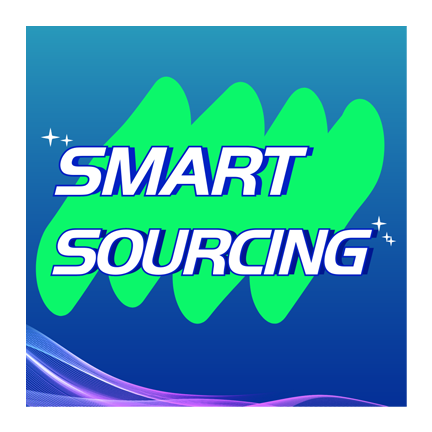
Smart Sourcing Content Team
Article by Smart Sourcing Content Team
The Smart Sourcing Content Team is committed to delivering high-quality, easy-to-understand information that helps our audience navigate the complexities of global sourcing. Our team of writers has extensive experience in producing articles across various fields such as procurement, supply chain management, market trends, and industry best practices. We specialize in sectors like apparel, textiles, and consumer goods, providing targeted insights to help businesses in these industries optimize their sourcing strategies and stay competitive.
Grow your business with TradeAider Service
Click the button below to directly enter the TradeAider Service System. The simple steps from booking and payment to receiving reports are easy to operate.

